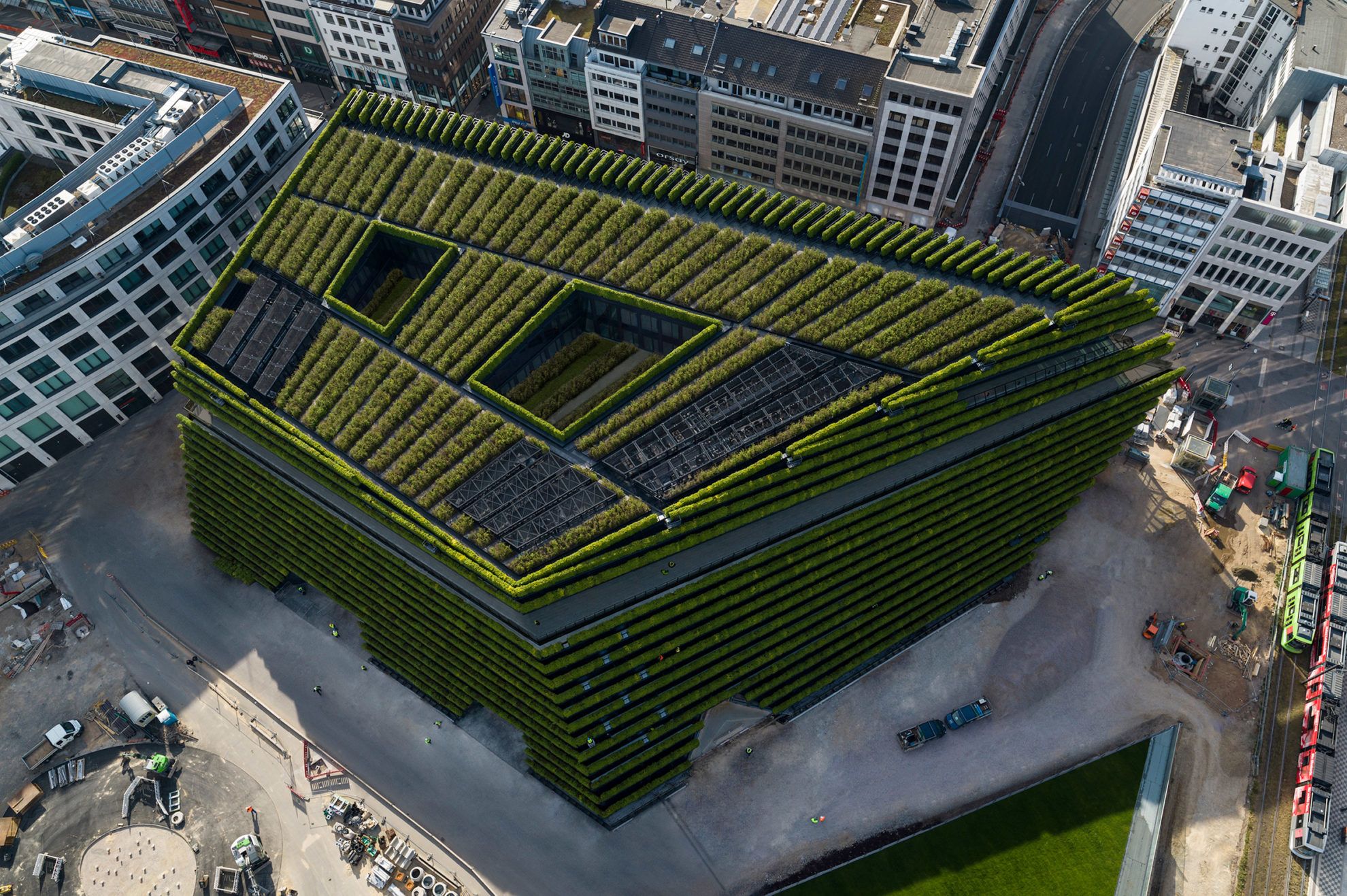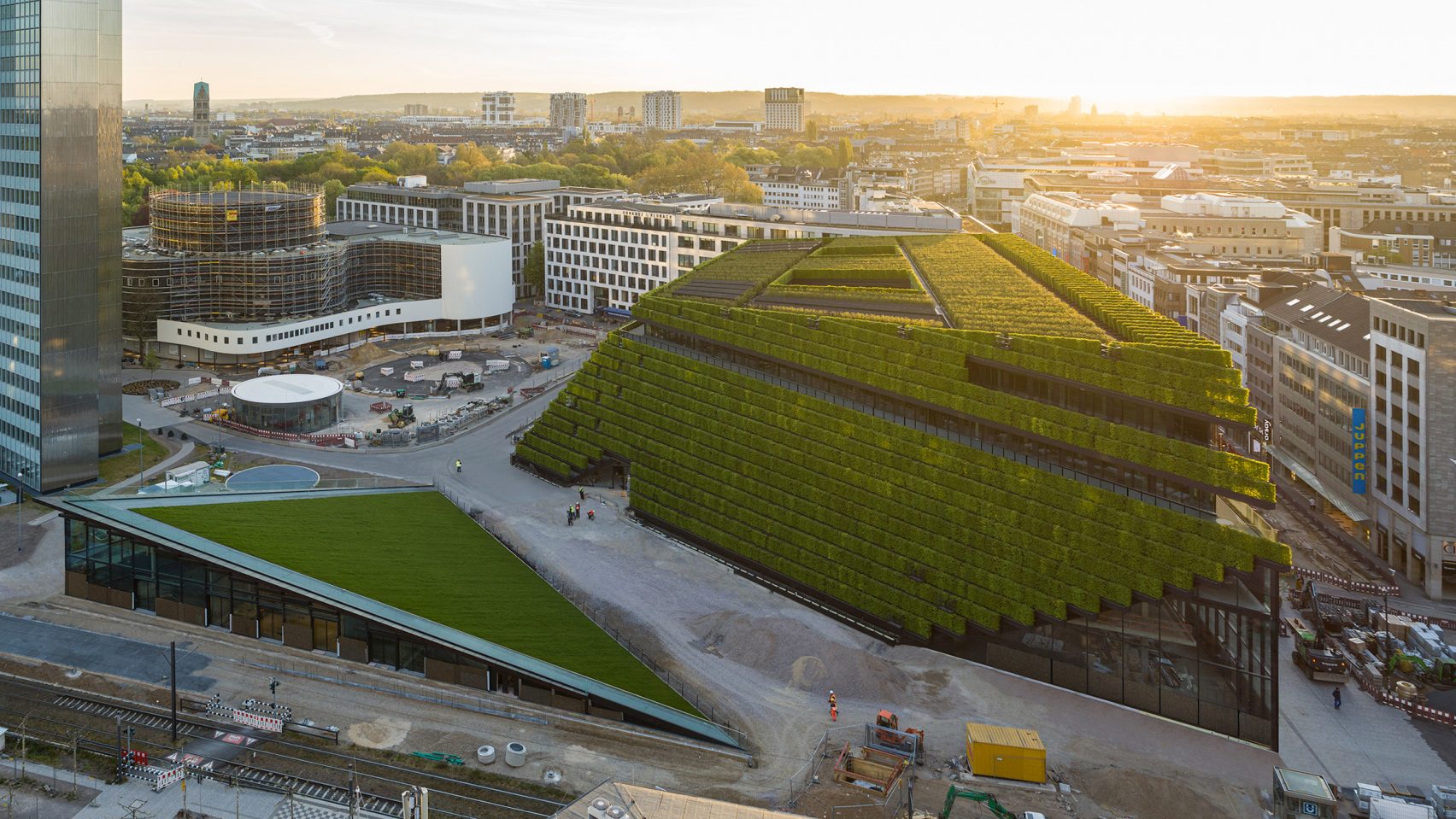A hedge consisting of 30 thousand plants, stretching for 8 kilometers. The facade of Kö-Bogen II offices in Düsseldorf qualifying as the largest green facade in Europe has been completed by Ingenhoven Architects. In addition to handling sustainability as a flagship issue, the development also represents a paradigm shift; the facade covered in greenery contributes to improving the city’s micro-climate significantly.
Building the Kö-Bogen II complex is part of Düsseldorf’s city renewal program. The five-storey office is located near Gustaf-Gründgens-Platz, in Hofgarten district, with a view to the modernist buildings of Dreischeibenhaus tower and Schauspielhau theatre.


Two entire facades of the trapeze-shaped building are covered in hornbeam hedges, which, according to the studio’s research, provide an ecological benefit equivalent to 80 deciduous trees. As hornbeam grows locally and is relatively easy to maintain, it proved to be best solution for the office development. The composition of the green facade is inspired by Land Art, making Kö-Bogen II a transition between city and park.



Ingenhoven Architects | Facebook | Instagram
Source: dezeen
Düsseldorf-based Ingenhoven Architects studio founded by architect Christoph Ingenhoven is a leading pioneer of sustainable architecture.

Lost in Bratislava | #stayhomecreative











